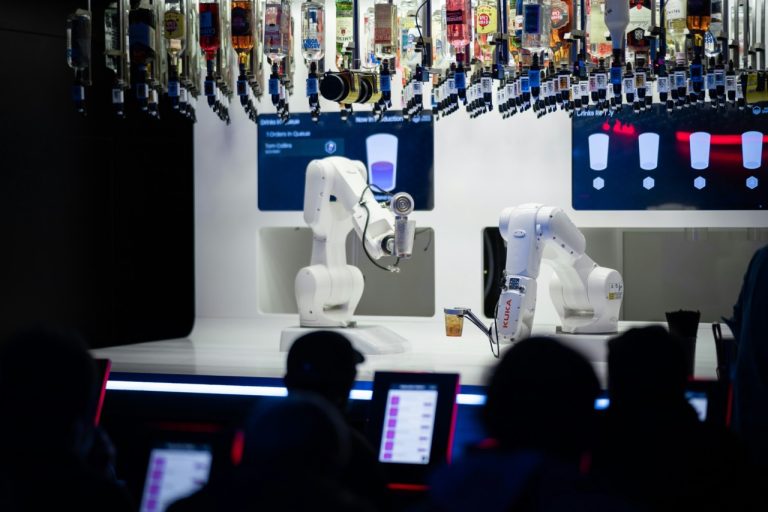
1. Overview of the Problem: Allergy as a Worldwide Phenomenon
Allergies affect millions of people around the world—a trend only worsening with changing lifestyles and urbanization. Celadonsoft deeply appreciates this reality, understanding that in an era of technology, simple answers won’t suffice: precision and creativity are needed. Allergen detection is therefore increasingly vital.
The atmosphere is somber:
According to WHO, 10-20 % of the world population suffer from some form of allergy.
- Allergic reactions result in tens of thousands of hospitalizations and several deaths each year—most often due to food allergens.
The challenge for IT professionals is the extremely unstructured data: symptoms, exposures, ingredients, and exposure conditions are heterogenous and disorganized. Billions of people today make dining decisions on food items at restaurants, shops, and cafes—that issue is both an economic and a medical issue.

Consider the allergic climate:
| Allergen Type | % of Affected | Typical Sources | Risk Level |
| Category | Subcategory/Title | Examples and Definitions | Subcategory/Title |
| Food Allergy | 6–8 % | Nuts, milk, eggs, seafood | Moderate–High |
| Atopic Dermatitis | 10-15 % | Pollen, dust mites | Low–Moderate |
| Drug Allergy | 2-3 % | Antibiotics, pain medication | High |
| Anaphylaxis | 0.05–0.1 % | Multiple allergens | Extremely severe |
What needs to be remembered by IT and health system developers? Allergic reaction is a dynamic process—symptoms and triggers and reaction vary case by case. Manually collecting, parsing, and entering it all into systems is short of humanly possible.
But it’s a much larger issue than numbers: food inspectors, grocery stores, and government departments alike are coming under pressure to adapt tech for the allergic. Artificial intelligence steps into the scene here with the potential to have real breakouts.
Before we look at how AI is revolutionizing allergen recognition, let’s set things straight: allergies are not just a disease—they’re an ecosystem. To deal with them, we need a wholistic, multi-discipline solution at the crossroads of medicine, IT, and public policy. Celadonsoft is imagining spearheading change in new cross-discipline innovations that will secure and improve millions of lives.
Below are how allergies are being revolutionized by AI for diagnosis, prevention, and management—now and in the future.
2. HEALTH THROUGH TECHNOLOGY: How Artificial Intelligence Revolutionizes Allergies
Contents
It has never been so essential to make swift and precise decisions—and so it is for medicine, and for Allergology. We at Celadonsoft find ourselves uniquely situated on this crossroads: Allergy diagnosis, monitoring, and reaction are being transformed by AI capabilities.
What is genuinely changing with technology?
- Automated identification of allergens from infinite, diverse data sources
- Improved diagnosis based on identification of patterns not detectable by humans
- Individualized recommendations and warnings based on genetic and medical tests
AI is combined with big data, sensors, and mobility devices—no longer offering raw data, but ready-to-use advice. Prevention becomes less responsive and increasingly anticipatory.
Above all else, technology bridges gaps which other methods cannot. Doctors lack both human and time resources to scan for all products and environmental sources. Artificial Intelligence cross-references millions of pieces of data automatically, flagging risk ingredients and raising instant warnings.
3. Food-scanning Algorithms: How Artificial Intelligence Finds Allergens
When it comes to allergies, poison is in the details. Celadonsoft AI reads food like a book, scanning for composition, preparation, and packaging to detect allergen risk.
They function for IT professionals and others like this:
- Structuring and Data Collection
- Lists of ingredients from producers/vendors
- Regulatory documents, food certification certificates
- User complaints and alleged allergic reactions
- Natural Language Processing (NLP)
- Ingredient list parsing—having ambiguous or alternative names
- Translation description of recipe/process with allergenicity modifier possibility
- Finding small formulation adjustments
- Machine Learning and Prediction
- Grouping foods by likelihood of developing an allergy
- Updating models constantly with user feedback
- Acclimating to local food consumption and dietary label peculiarities
It’s so much more than keyword searching—these algorithms read the “language of food,” interpreting all the spices, preservatives, and even packaging for allergen risk.
Computer vision is also at center stage: we create systems which scan images of packaging or plates and identify dangers when textual data is absent.
Result: Allergen detection becomes quicker, more accurate, and accessible—advantaging app developers and everyday customers, for whom safety emerges as top priority. This is a prime example of food safety AI at work.
4. Personal Space: How Mobile Applications Make Daily Activities Safer
The pace of life today makes mobile phone applications a lifeline for millions of food allergy patients. You have in your pocket the tools which can make allergen detection second nature. Celadonsoft, where health meets Artificial Intelligence, follows how such digital tools are transforming the landscape.
Why are today’s mobile applications a game-changer?
- Scanning products in real-time. You can transform your phone’s camera into a sensor: scan a barcode and machine learning identifies allergens and warns within seconds.
- Personalized allergen profiles. We’re all different—so app allergen lists must adapt. AI keeps learning, sharpening its accuracy with each user and with each new ingredient.
- Smart substitutions and suggestions. Warnings are only just a beginning—apps also suggest suitable substitutes depending on your tastes and local availability.
- Smart home and wearables integration. Your wearables may monitor physiological reactions to foods; your fridge can notify you of allergens present within foods purchased.
5. Translating Data into Policy: How Data Inform Food Safety Regulations
Information extracted from applications is greater than just figures—it’s living, breathing data with the strength to reimagine public health policy. Celadonsoft believes: AI is a conduit that bridges an individual’s needs and system decisions at business and government levels.
In practice, it works out like this:
- Big Data Analytics
AI aggregates user data globally, picking up on trends, emerging reactions, and vulnerabilities within current labeling or food safety controls. - Reporting and Regulatory Visualization
Aggregate data is synthesized to inform foodservice industry professionals and regulators, leading to new safety rules or labeling standards. - Direct user feedback
Anyone can indicate insufficient allergen reports—those reports are aggregated and can trigger quick response at a policy level. - Compliance and standards in real-time
Not only can AI systems make rules, but also enforce and monitor them, driving AI compliance across the industry, with a decrease in response latency from threat to response.
So, allergen-alerting apps aren’t just a convenience—they’re revolutionizing the industry itself. Celadonsoft is developing products that empower the people and make the world of food a healthier place for all. You can explore our latest project, Allergen alert AI, to see this vision in action.
6. Ethical Implication and Responsibility: Considering How to Implement Allergy Diagnostics with AI
AI for health means accountability and ethics come first. Celadonsoft gets it: technology is powerful and imperfect. Allergy alert AI must create net benefit, not net harm.
The most controversial hot-button issues among developers and professionals:
- Transparencias de
Citizens need to understand how decisions are made. Black boxes are no longer adequate when lives are involved. - Confidentiality of
Diet and allergies are highly personal. Confidentiality must be absolute—no breaches, no misuses. - Responsibility for mistake
Who’s at fault if AI incorrectly identifies an allergen—app owners, developers, or the clinic? There need to be transparent mechanisms for user support and liability. - Equity and accessibility
Innovation must not widen inequality. AI must benefit all humans—not only device owners with newer devices or digital literacy. - Accountable Data Utilization
Data marketing or targeting without the users’ explicit permission is a no-go area. Rules need to clearly define boundaries.
Celadonsoft subscribes to open communication with clinicians and end-users. We can only create fully beneficial and ethically sound products by sharing information.
Please
7. Allergen Alerts AI-Enabled: Where Are We Heading?
In the future, technology’s potential applications for allergies are just beginning. Trends to watch for:
- Wearable device interoperability
“Smart” plates and watches can scan food in real time and give people instant warnings. - Individualized comprehensive assessment of risk
It will map not just allergens, but also complex risk profiles—considering diet, genetic factors, and comorbidities. - End-to-end automation
AI will track allergens along the lines of manufacturing to consumer home and restaurant—less human error. - Smart interfaces
Augmented reality and voice assistants will help users identify safe options from cafes and shops. - Sharing international data
Cross-border sharing of info will increase allergen databases and responsiveness to rising threats.
We at Celadonsoft envision the road forward is tech + responsibility + expert collaboration. It’s about trust-building, making AI understandable and accessible to all classes of users—from everyday app users to global food policy decision-makers.
AI isn’t just an evaluator of man-made items—AI is a partner in public health. We need to make these technologies accessible, trustworthy, and usable by all.

8. Conclusion: Future Directions for Applying AI in Allergology and Public Health
AI’s reach within medicine these days extends far beyond number-crunching—most notably within allergies, whose complex reactions and multi-factorial stimuli call for creative solutions. Celadonsoft is sure of it: Allergy care and AI is no longer a trend—it’s normal.
Three key directions will define the future:
- Intelligent diagnostics and customised medicine.
AI makes possible the comparison of huge patient sets—lifestyles, exposures, responses—leading to incredibly precise allergy profiles. The reward: prevention and treatment strategies that fit the individual, not the average. - Monitoring and notification in real-time.
As these systems are integrated with wearables and mobiles, users can monitor threats and receive warnings, reducing emergency cases and streamlining everyday living. - Policy and public impact.
Not only does it benefit humans, but it also provides regulators city- and national-level data—informing standards for food, business, and service.
Nonetheless, problems remain:
- Fostering algorithmic security and clarity—avoiding errors, discrimination, and bias
- Intuitive interfaces and dynamic recommendations
- Flexible laws to allow it to respond to changing technology and protect patients’ rights
Celadonsoft’s mission: to give reliable, ethical solutions integrating state-of-the-art technology and human need. Our recommendations:
- Make cross-disciplinary investments—combining data science, medicine, and UX
- Remain close to the physician base—so models are never outdated.
- Open standards and APIs—easy and secure integration.
- Oversight on ethics—integrate committees, controls, and audits into all healthtech efforts
In short: Artificial intelligence is an allergology game-changer, making previously apparently arbitrary and daunting predictable and manageable. For IT professionals, exciting prospects lie ahead—if we broaden our horizons and focus on patients. Celadonsoft is committed to this mission: developing solutions which truly make the world a gentler and safer place for everyone. We can collectively ensure a future wherein technology enables—instead of replacing—human health and happiness. This ongoing pursuit of food safety AI stands at the heart of our vision.


